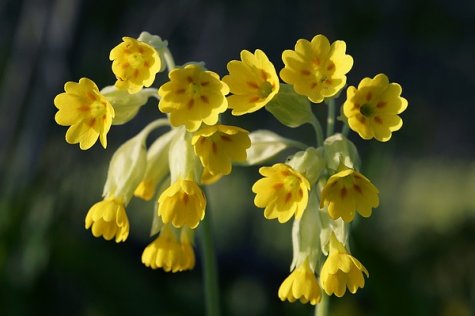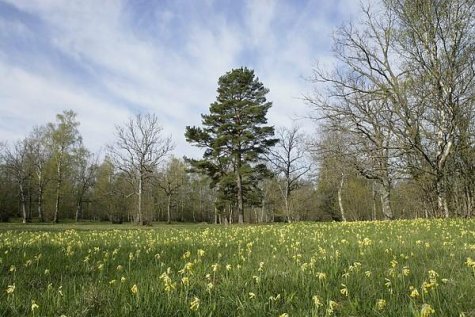Bloomers
Photos: Arne Ader
Translation: Liis
Cowslip
Cowslip Harilik nurmenukk Primula veris
The pale green leaves of the perennial plant cowslip – elongated ovoid, with wavily serrated edges and densely set with hairs - developed fast in early spring. They will remain on the plant until mid-summer, then a second generation of cowslip leaves grow – only some attention is needed to notice it. Young leaves contain an amazing amount of vitamin C: one tiny leaf covers the daily requirement of an adult human – definitely worth a try although in reasonable quantities. From the dried flowers a quite aromatic tea can be prepared.
The cowslip has a small rhizome in the ground but is does not spread far from its place of growth by this. The pretty flowers, familiar to all, open on stems that are some tens of centrimetres long, leafless and hairy, and the flowers are up to 15, sometimes more in good habitats. The petals have grown so they are fused at the bottom, worth exploring closer. It is easy to see the pistil as well as the stamens; some plants have longer pistils, others longer stamens and such an adaption favours cross-pollination – pollen does not fertilize a pistil on the same plant.
Cowslips prefer habitats rich in lime and nutrients and not too wet - meadows, garden and park lawns, forest verges, open and light deciduous forests. Although you can find cowslips everywhere in Estonia the most beautiful habitats are on the islands and if you were to draw an imaginary diagonal from Pärnu in the south to Narva in the north on the mainland then always in the lime-richer areas.
Very beautiful flowers in a vase; from a garden flowerbed they are quite likely to escape into nature and also hybridize with cultivated primulas growing in the garden (see the Latin name – Primula - of the cowslip)
In the home garden lawn cowslips reproduce easily by seed if these are left to ripen.
Laelatu wooded meadow
Translators note:
In older dictionaries ”nurmenukk”, Primula veris, has often been translated into English as primrose (and vice versa). The very pretty flowers of the primrose, Primula acaulis - paler yellow, larger and very short-stemmed - were a favourite of Queen Victoria and were worn by her long-time Prime Minister Disraeli as buttonhole flower (a sign of the ”Primrose League”). Imagining a dandy and snob such as Disraeli having the real ”cowslip” as signature flower is actually a little difficult /Liis










